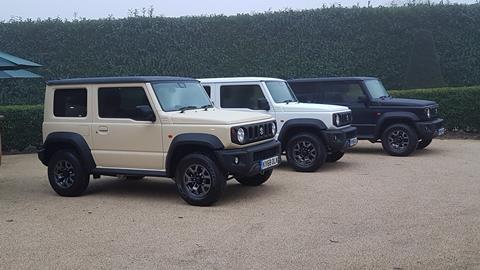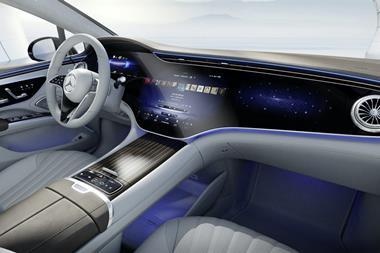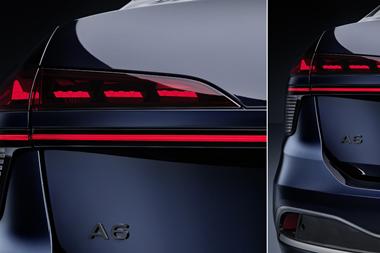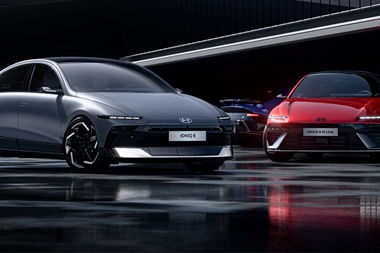We explore one of the most hyped cars of the moment, the new Suzuki Jimny, on-road and off
If the Alpine A110 has been one of the sensations of the past year, then the fourth-generation Suzuki Jimny is one of the sensations of right now. The positive response to this boxy, retro 4x4 has been instant, rampant and widespread – so much so that the waiting list for one in Japan is over a year long (apparently they would currently need a second factory at full capacity to meet demand).
Suzuki UK alone have had over 1200 firm orders and 10,000 people expressing interest in buying one of the 600 cars they will receive from the mothership for the first half of 2019. Oh, and to top it all off, it’s in the running for 2019 World Car of the Year.
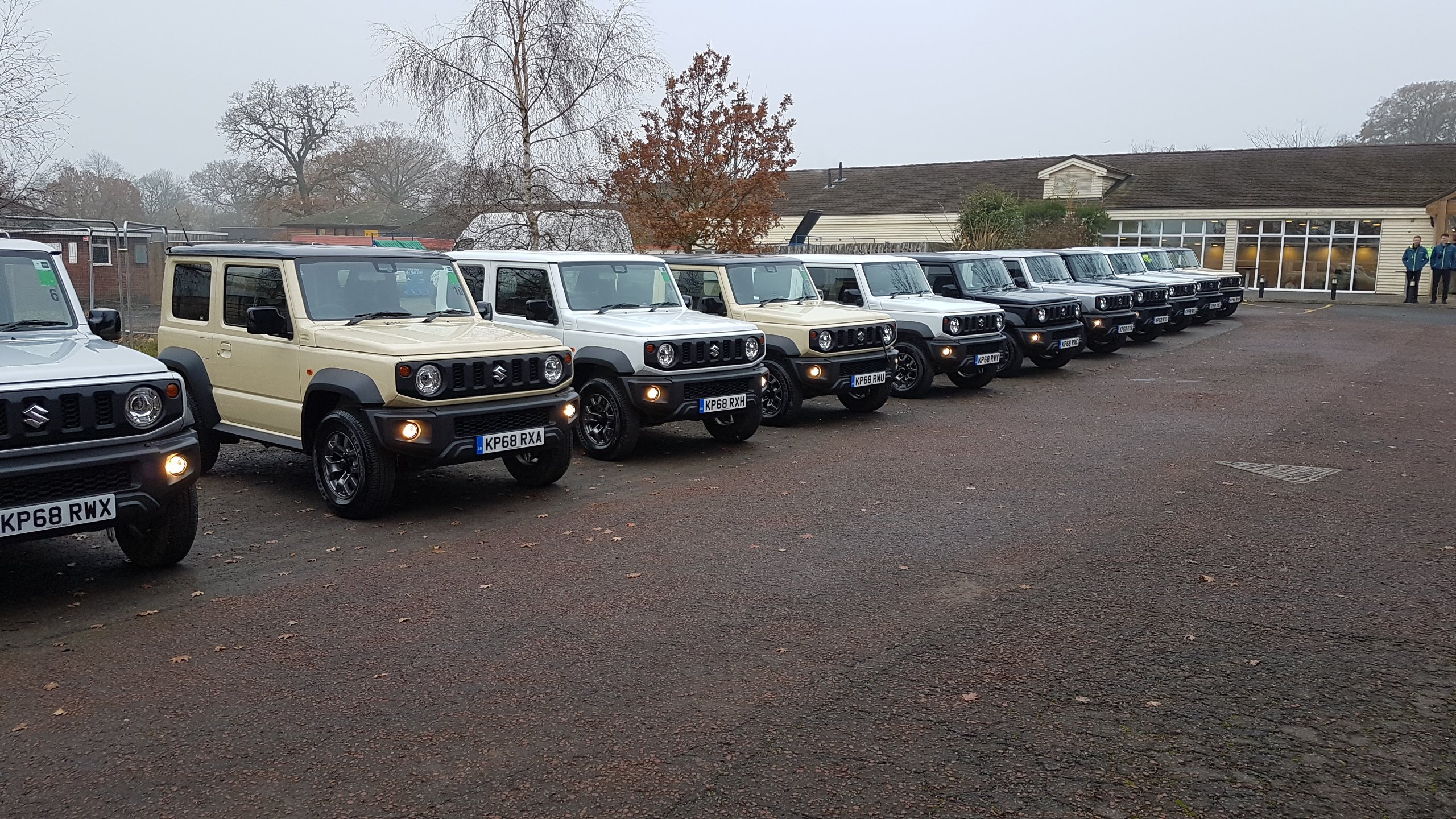
Considering that all these people who are desperate to get into a new Jimny had never so much as stood next to one or learned of the actual prices before placing an order, we can only surmise that it’s the design which is making this car hit such a vibrant chord with people… so we were keen to inspect this little phenomenon for ourselves and see what’s what.
Exterior
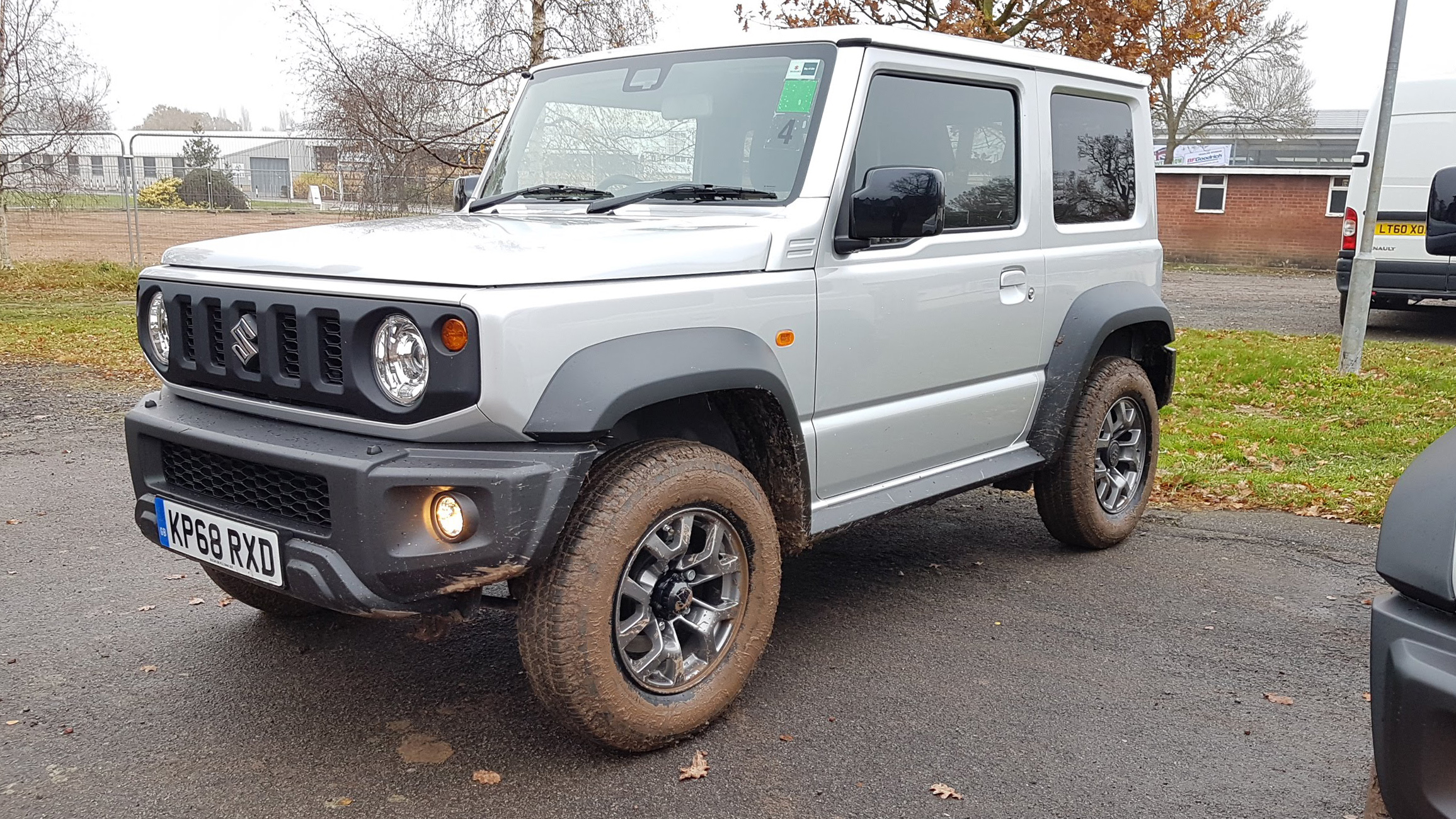
The funny thing is that it seems this widely adored exterior looks good almost by accident. Suzuki UK didn’t talk about ‘emotional’ this or ‘stance’ that or ‘active lifestyle’ something-else, they just pointed out how every decision was made for practical reasons, dubbing the Jimny “a tool for professionals.”
Overall, it’s only as boxy as this to improve visibility and packaging. The notch in the DLO is only there to increase the visibility of rough terrain when off-roading. The rear side windows, too, are only square to increase the field of vision. The bumpers are shaped to avoid limiting the approach and departure angles as much as possible.
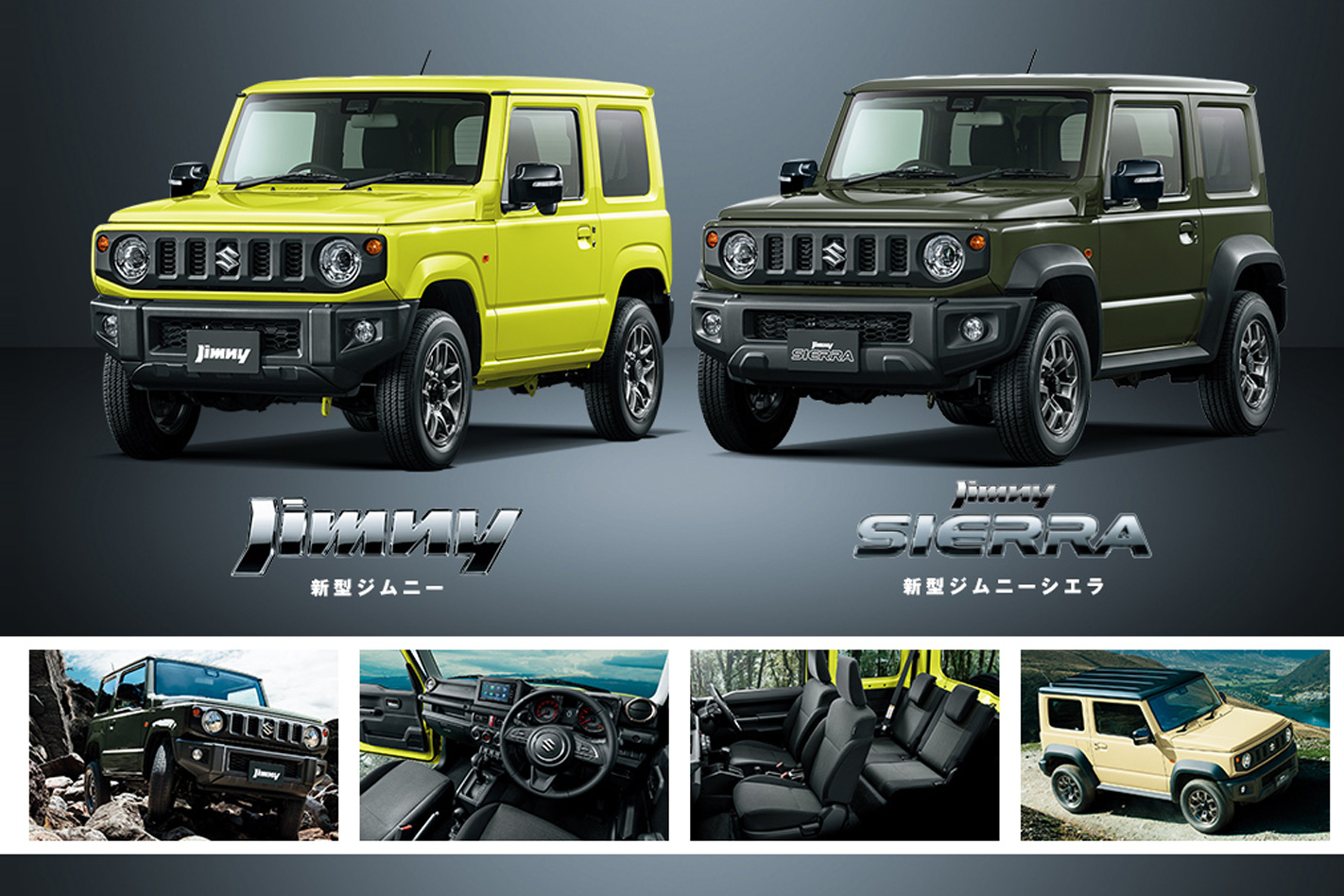
Speaking of packaging, the main reason the Jimny is so small (30mm shorter than the outgoing version, but 45mm wider and 20mm taller to enlarge the interior) is that, of course, Suzuki also offers it as a Kei car in Japan. That version loses its plastic wheel arch extensions and gets shrunken bumpers, narrower tracks with skinny wheels and a 660cc engine, to meet the strict regulations – but the sheet metal is completely interchangeable between the Kei and the ‘Sierra’ (or international) version and the interiors are the same.
This explains why even the ‘Sierra’ version sold around the world is slightly taller than it is wide.
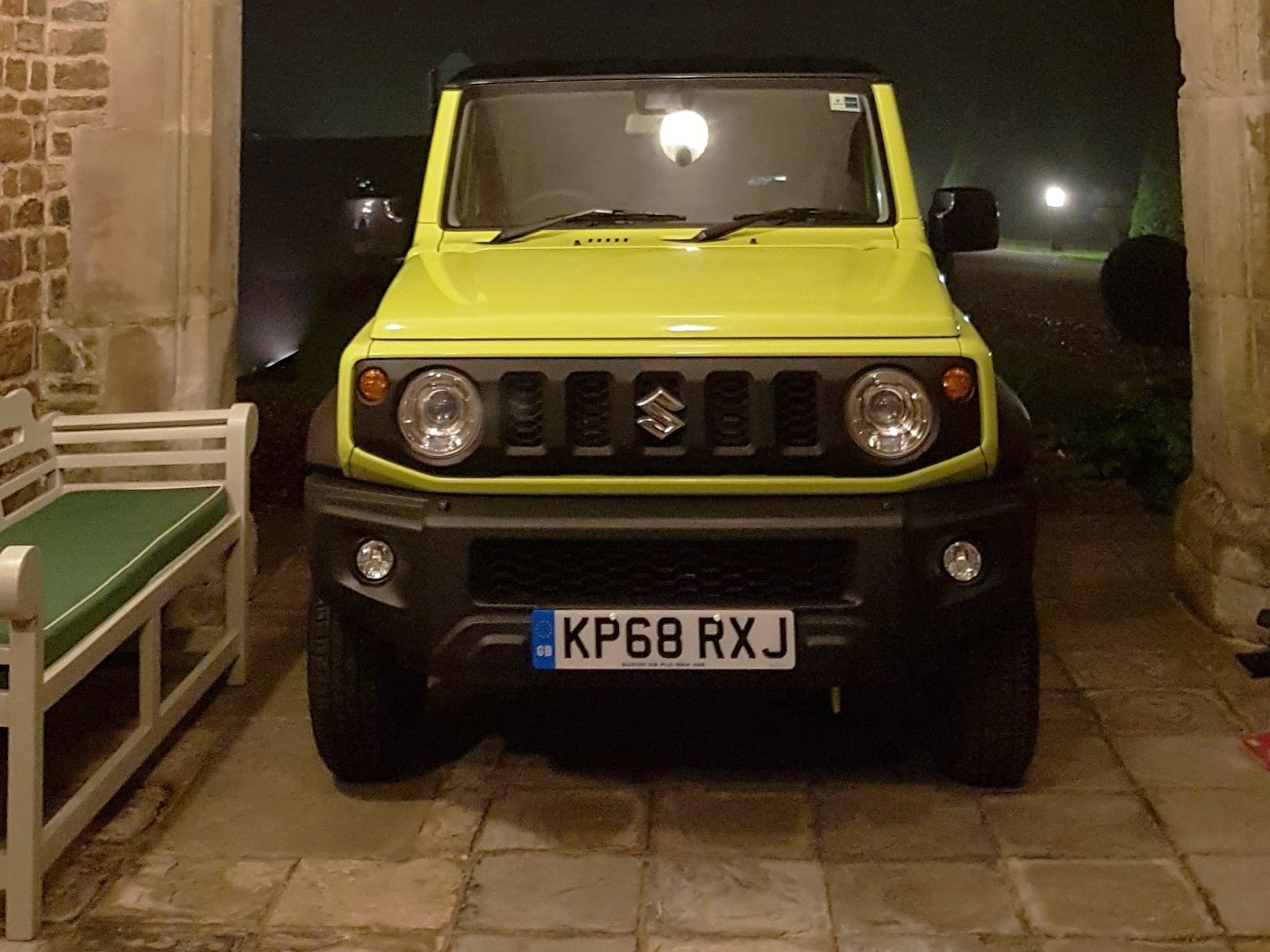
Lifting the mood are a few retro touches peppered quietly around this two-box mini-truck. The front mask with its big round headlights and up-turned lower corners is inspired by the original Jimny of 1970, and is easily anthropomorphised as a cute, smiling face in combination with the opening in the front bumper below it.

New Jimny vs SJ413 – not to scale
The dead-straight horizontal character line, the clamshell bonnet and two little grooves in the scuttle panel behind it reference the SJ-series of the 1980s and ‘90s. Finally, the vertical grille openings are a connection to the third-gen Jimny of 1998-2018.
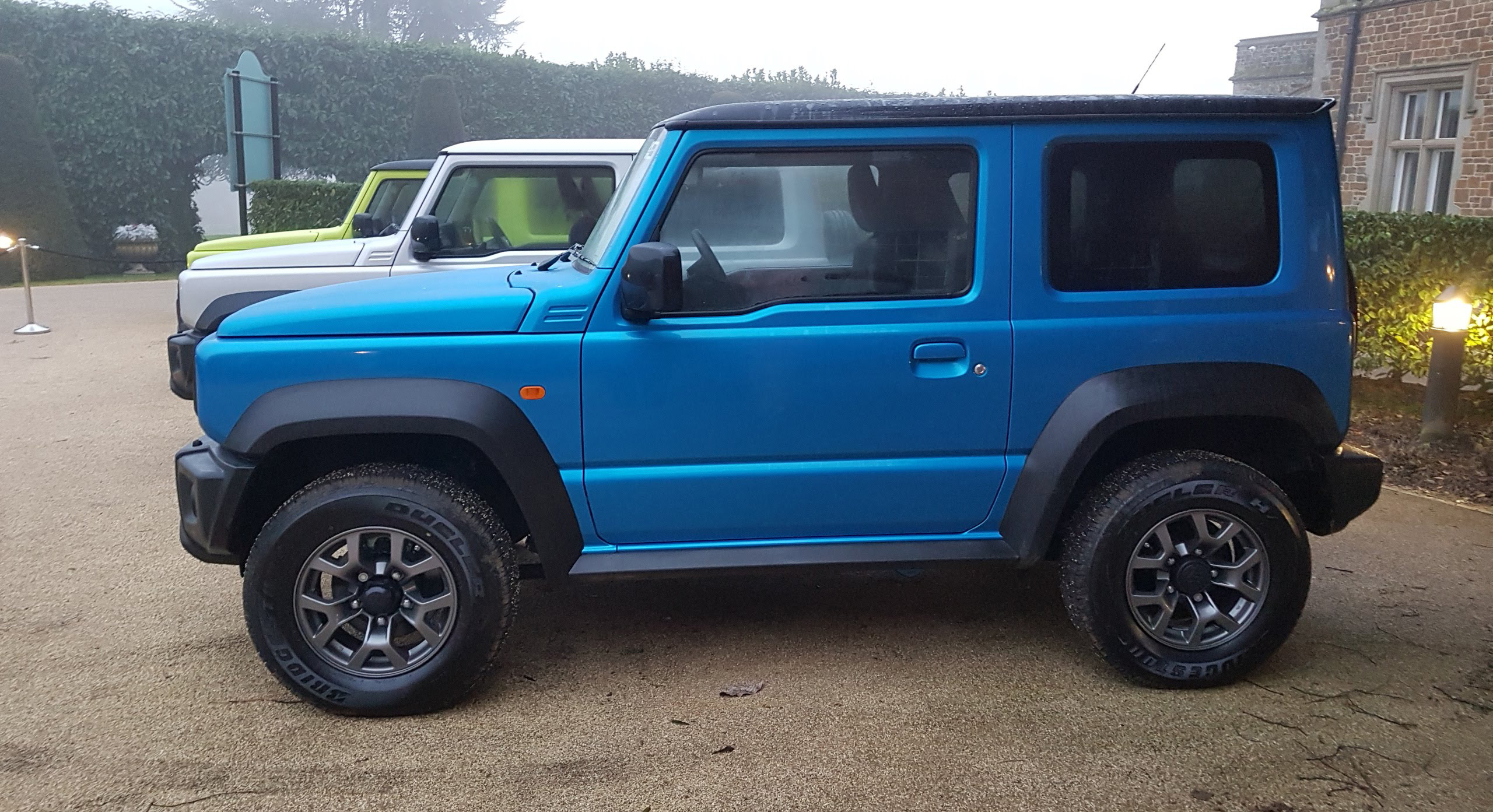
The side profile is very neatly proportioned, with the front wheel arch and the bonnet almost exactly the same length, the door filling the entire space between the front and rear arch flares, and the overhangs at a bare minimum. The alloy wheels that feature on the ‘SZ5’ spec level look as though the wheel nuts have been inserted with such force as to push the spokes inwards towards the centre.
Many people have compared certain aspects of the car to the equally squared-off Mercedes G-Wagen. It is lazy to just say that one car looks like another, of course… but that rain gutter is uncanny…
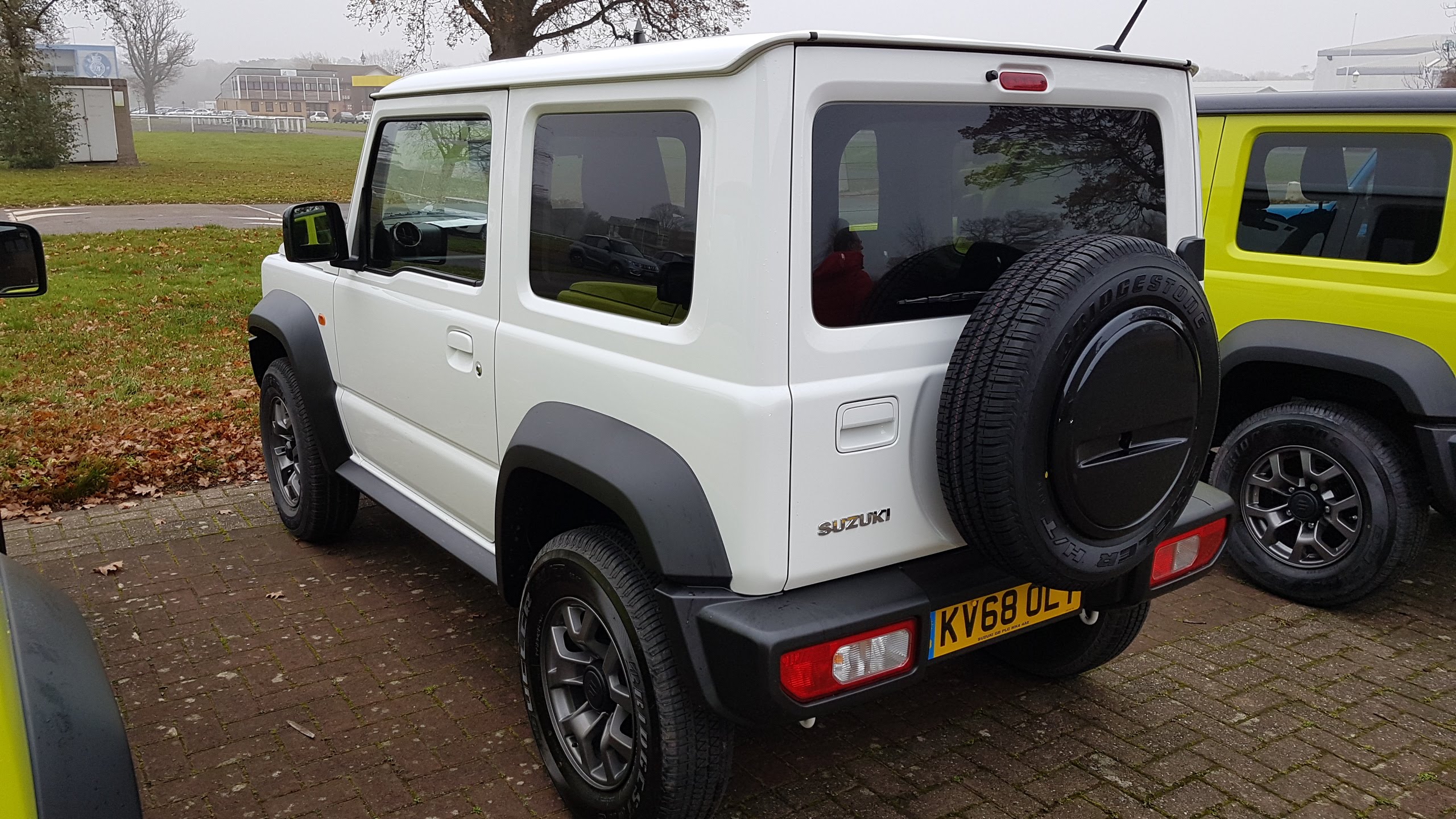
The rear end comprises almost entirely of the side-hinged rear door, complete with spare wheel. The taillights (CHMSL notwithstanding) have migrated down to the bumper to allow the tailgate opening to be as large as possible – although we wonder how useful they’ll be down there once they’re covered in mud.
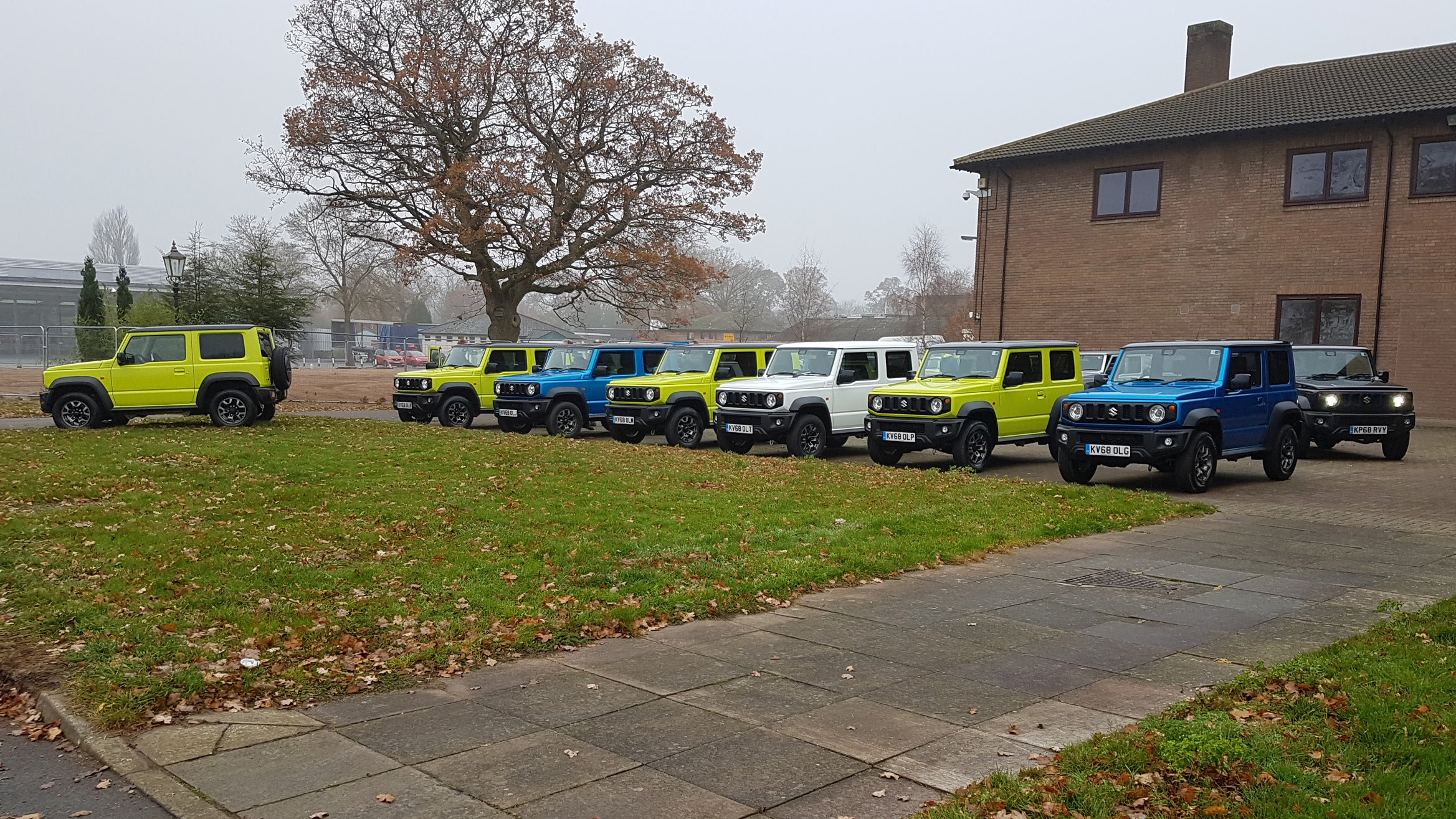
Overall, there is a pleasing honestly to this exterior, which, when combined with such a friendly ‘face’ and overall size, is immediately endearing. It seems nobody does approachable and unpretentious quite like the Japanese.
Interior
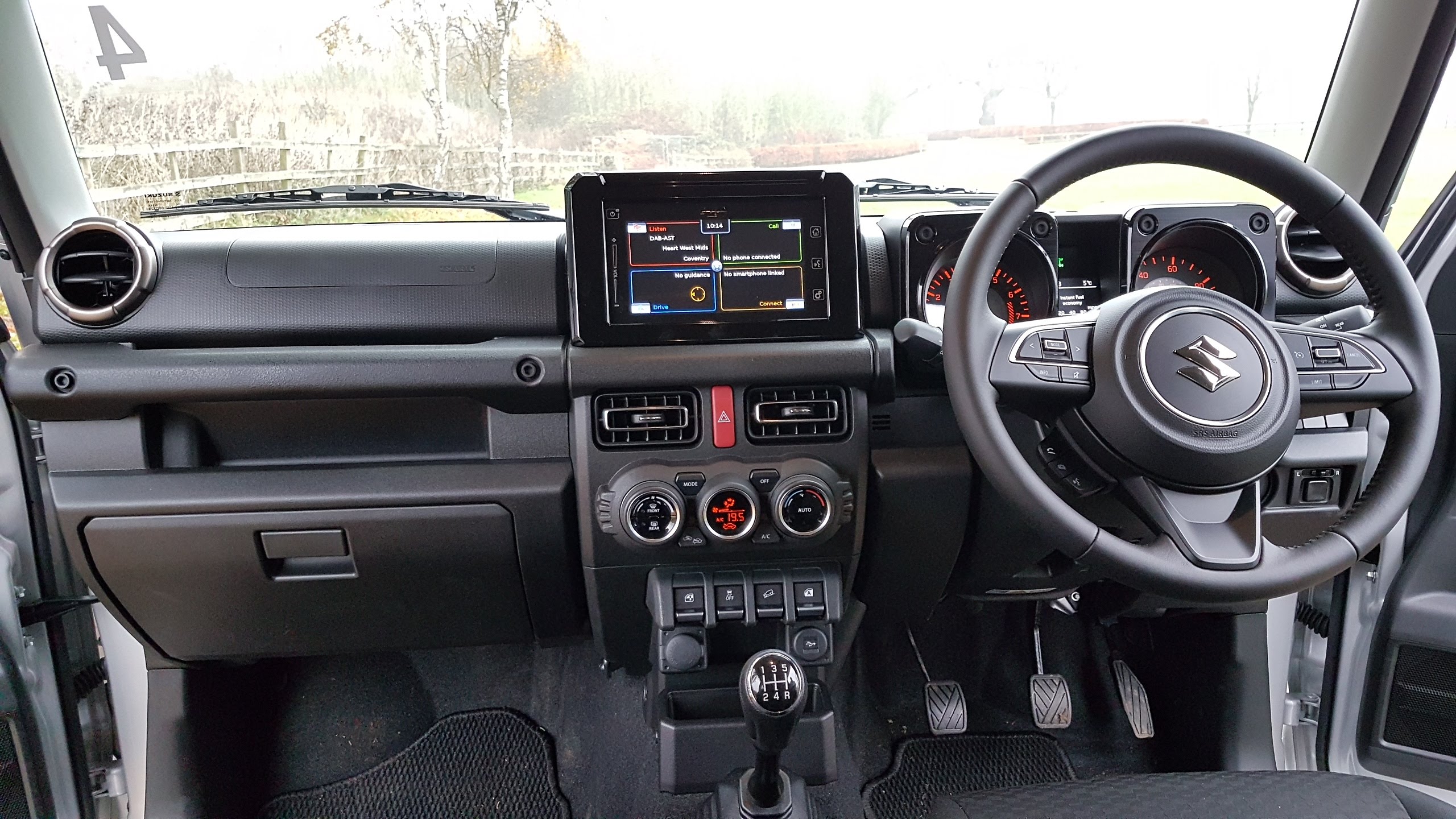
Inside, everything is chunky and chamfered, with the dash controls all designed to be usable with gloves on (even the seven-inch touchscreen works with gloves).
The big round dials have square frames with slightly dubious rubbery ‘bolt heads’ in the corners (also found on the enormous passenger grab handle), while a little low-res screen sits quietly in between. The dash top is horizontal to help off-roaders understand the car’s lean angle compared to the terrain in front of them.

Among other things, the ‘SZ5’ model – the top of a two-tier range, above a basic ‘SZ4’ – gets a leather steering wheel, which is the only piece of leather available in the entire car.
Everything else is intended to be tough and hard-wearing instead of luxurious, from the thick, hard plastics to the fabric-only seats to the ‘diamond pattern’ plastic cladding on the back of the folding rear seats, which themselves just about fit adults in short-term comfort with offset foot space.

Speaking of the rear seats, those Kei-car body dimensions mean that you have to choose between transporting four people or transporting their luggage, as the boot space with the rear seats up is, frankly, a joke. You do at least get an extra compartment beneath a full-width lid, which can hold, oh, about two dozen eggs or so.
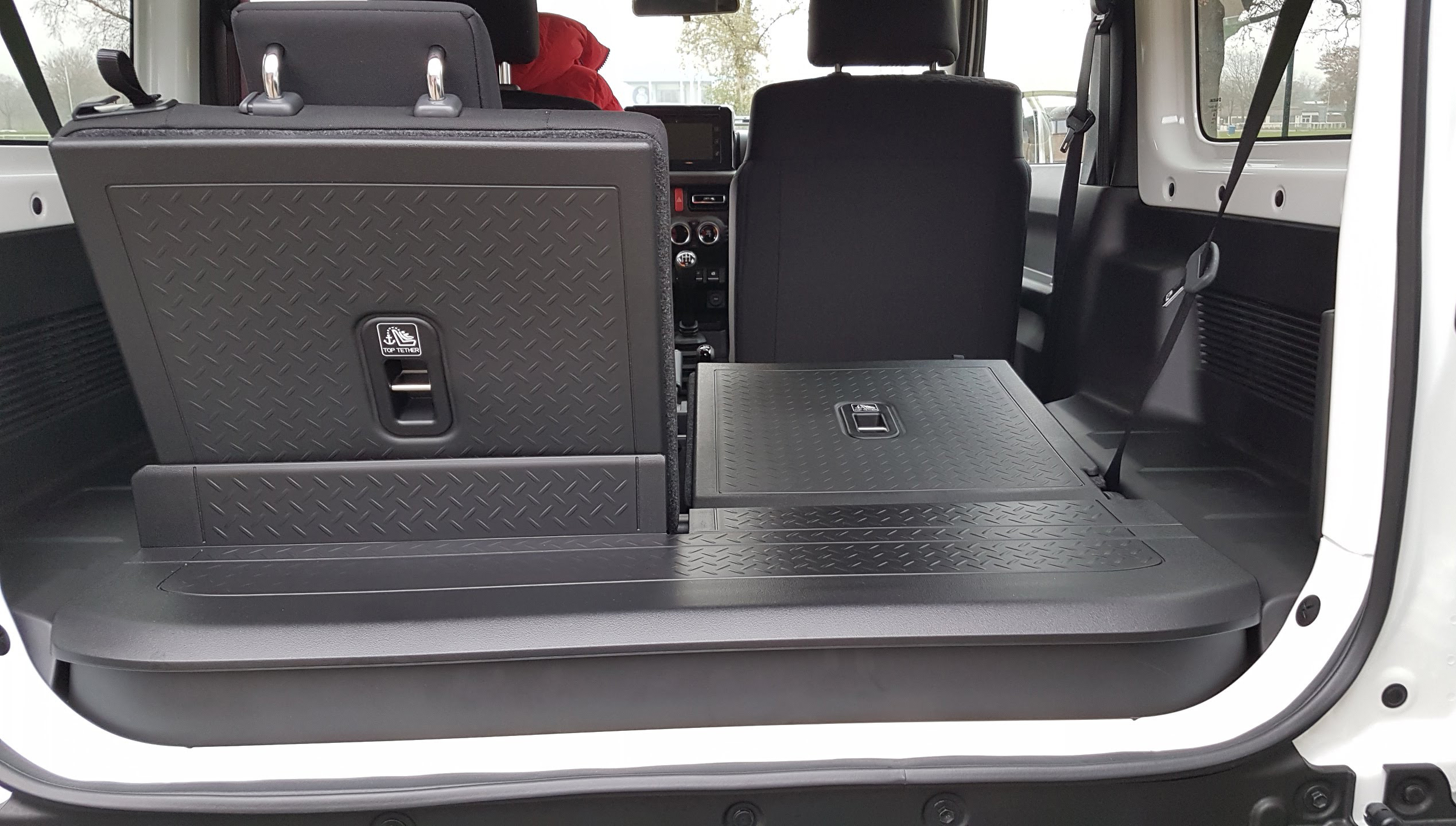
Folding both seats down yields 377L of storage volume, 53 up on the old Jimny, but beware that the scratch-proof plastic flat floor created by doing this is very slippery – we put a rucksack in the back while driving off-road and found that it very quickly slid off into the rear footwell. Best invest in a rubber mat…
Driving & UX

One bubbling concern about the intense hype around this machine is the question of how many of these buyers are Jimny lifers looking to replace their 15-year-old car with the 2019 one and then keep it until 2034 or so, and how many are urbanites who love the shrunken-Defender aesthetic and city-friendly size.
The former crowd, we feel, will like everything about it. The latter? They might yet be rather disappointed if they were expecting it to behave like a raised A-segment hatchback, only to find out that it in fact behaves like the body-on-frame, rigid-axle truck that it is, with a selectable low-range gearbox and a very short wheelbase. Oh, and a meagre safety rating despite all the new electronic emergency systems…
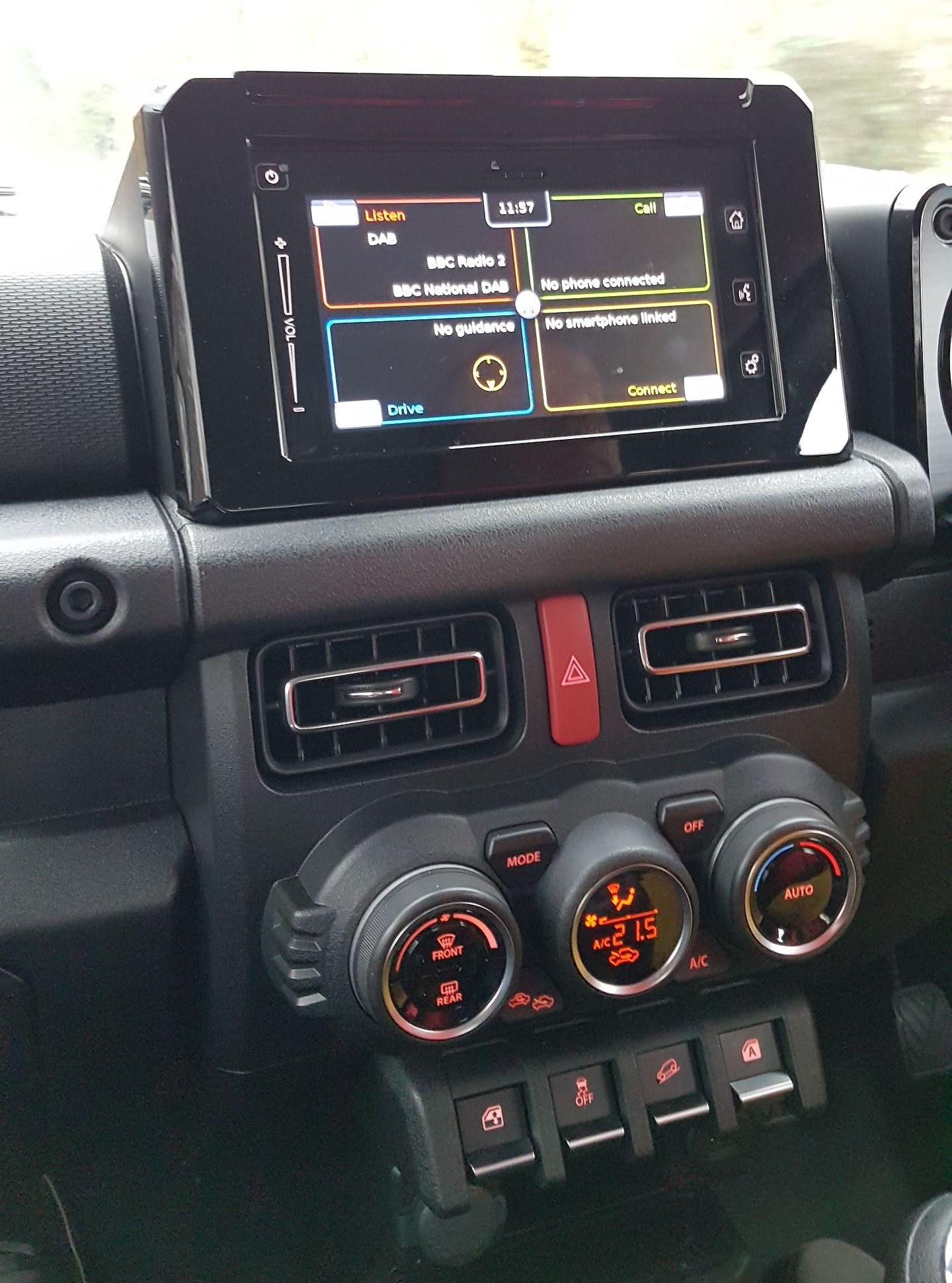
By a remarkable coincidence, the software for the touchscreen (SZ5-only) is a reskinned version of the very system used in the Alpine A110 we reviewed a month ago – sans performance telemetrics, sadly.
Suzuki’s setup is actually more intuitive than the one in the £50,000 sports car, because the screen, sitting in a chunky and solid frame, is flanked by permanent home, voice-command, settings and volume buttons to simplify the controls and avoid the A110’s biggest ergonomic problems. It also does its smartphone mirroring via CarPlay and Android Auto instead of a bespoke app.
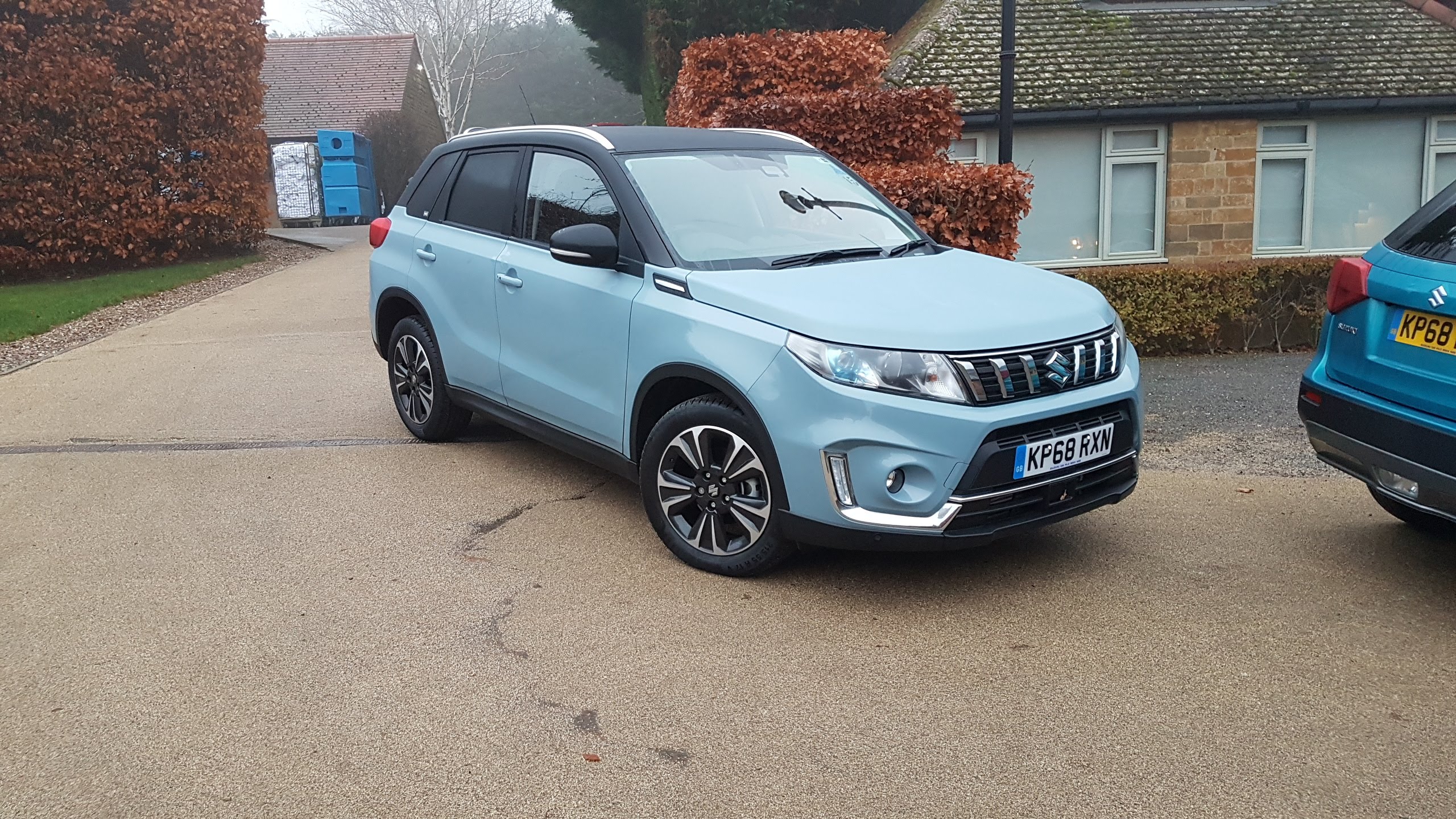
2019 Suzuki Vitara facelift
Suzuki also used the Jimny launch event to introduce its newly-revised Vitara – perhaps a reflection of how they hope the ‘Jimny hype’ will bring more attention to the rest of the range in its wake. This gave us decent seat time in a conventional family crossover as a frame of reference, which proved handy, as in many ways the Jimny is everything that the Vitara isn’t, and vice versa.
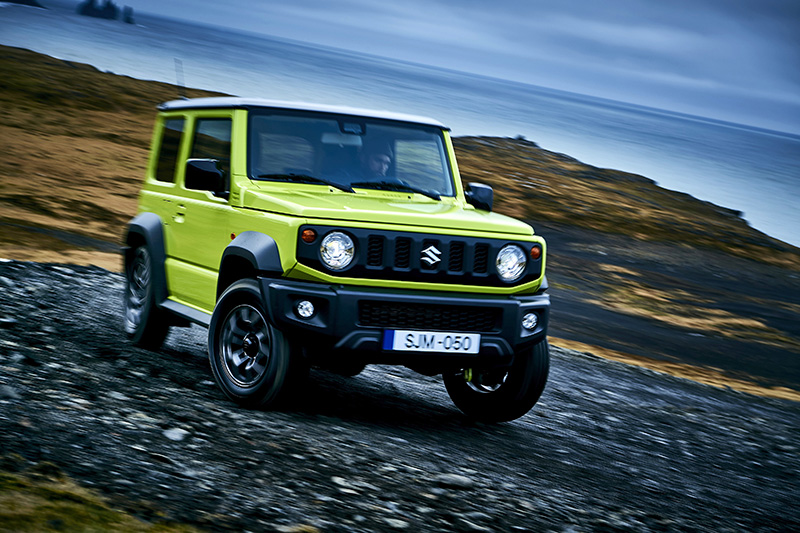
There are strong pros and cons to this. Where the Vitara is quiet and smooth but vague and distant, the distinctly old-school Jimny is roly-poly and has jittery damping on the road. In fact, it’s so softly sprung that slamming a door causes it to wobble for a second or two. This makes cornering, erm, less than encouraging – even roundabouts taken at regular speed bring on some noticeable lean.
The interior also has none of the Vitara’s new soft-touch plushiness, of course, and in a manual version there isn’t really anywhere to put your left foot between gear shifts either. On the plus side, visibility really is excellent as you can truly see right out to the corners of the Jimny.
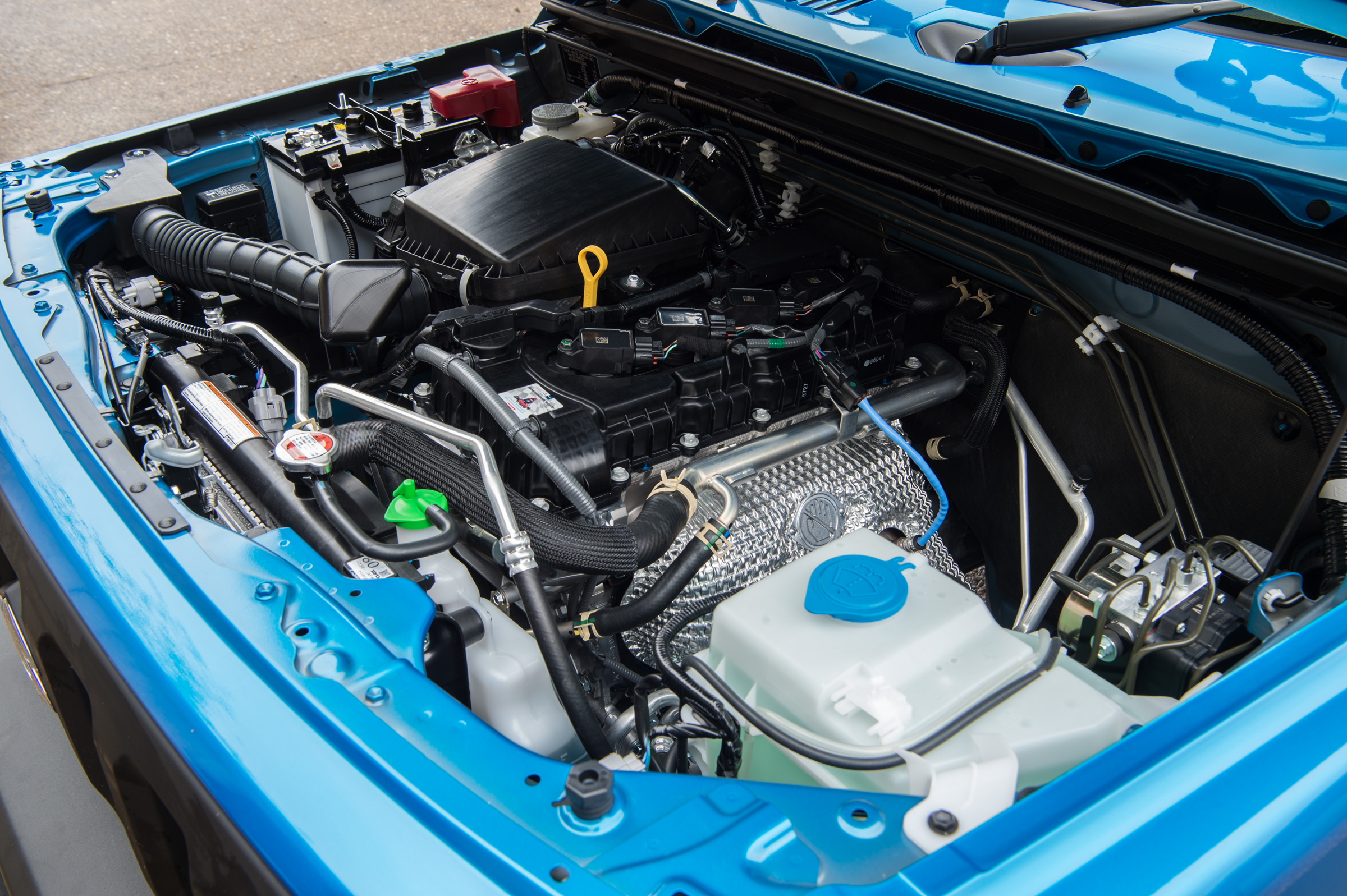
The 1.5 naturally-aspirated petrol engine is Fiat-like in its determination to make more progress than it ever actually is. The full 100 horsepower doesn’t arrive until 6000rpm, and peak torque (96lb/ft) isn’t reached until 4000rpm, so it’s a busy little powerplant in any circumstance and feels it. That said, at a stationary idle it is remarkably quiet.
Pull away, however, and drivetrain whine combines with growing wind noise to remind you that this is technically a truck, not a car. The gear shift is quite long and while longitudinal shifts feel direct, going from First to Reverse takes a bit of searching for the middle of the H-pattern. A four-speed auto is also available.
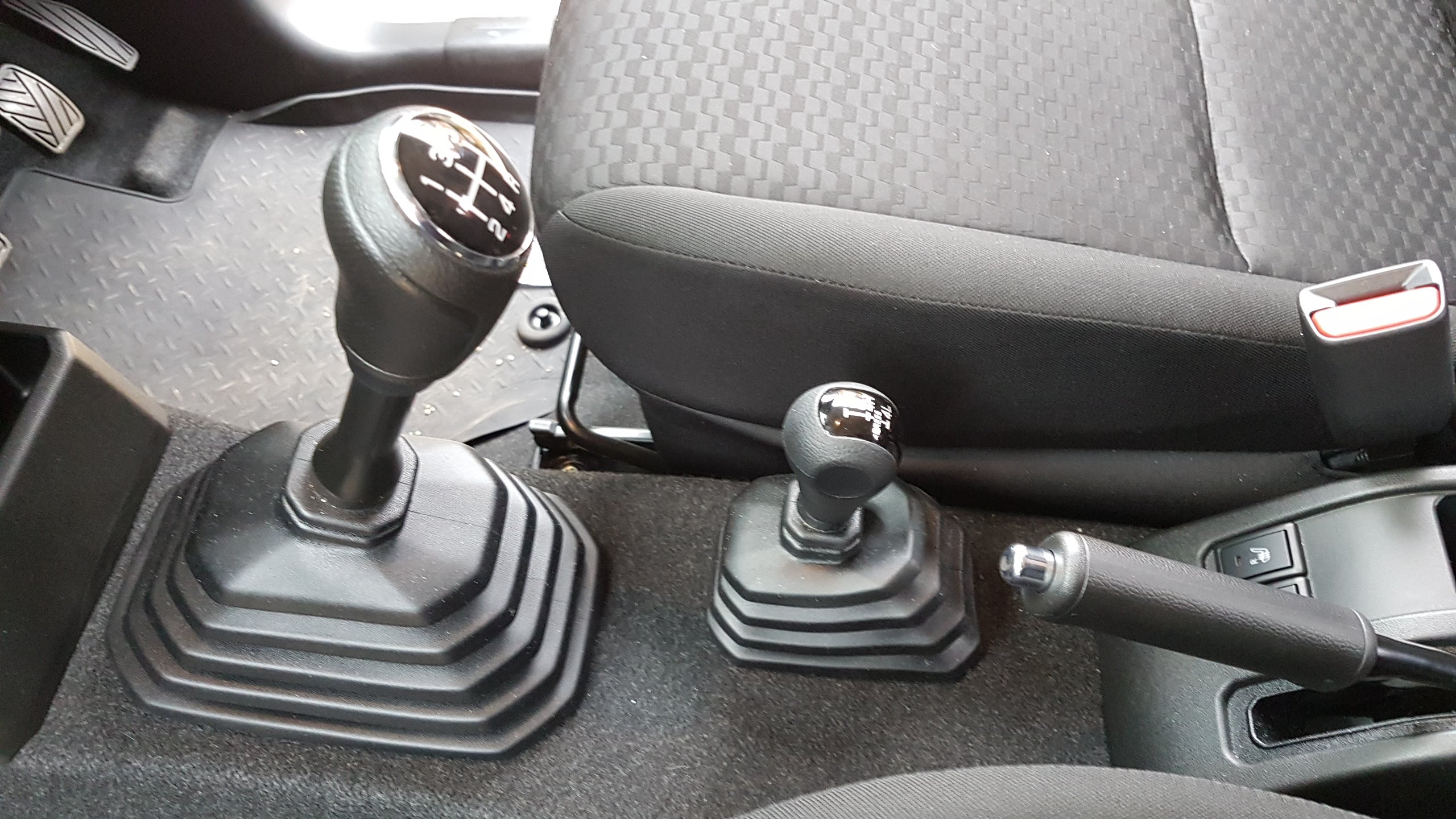
Then there’s the little lever for the transfer box. The driver can switch between rear- and four-wheel-drive at up to 62mph (100km/h), but must be stationary to push the lever hard down and pull it back to engage low-range – a process Suzuki reintroduced because customers felt the old version’s button on the dash didn’t feel substantial enough.
We tested this gearing on an off-road course, where the new Hill Descent Control came in handy and the Jimny found remarkable levels of grip no matter what it encountered. The off-road expert who chaperoned our shenanigans reckoned that “with a three-inch [lift] kit and big knobblies, it’d be almost unstoppable.” We’re not ones to talk about big knobblies, but the factory-spec Jimny certainly tackled tight, muddy hills in the woods of Stoneleigh Park with enthusiastic aptitude on its standard-fit road tyres.
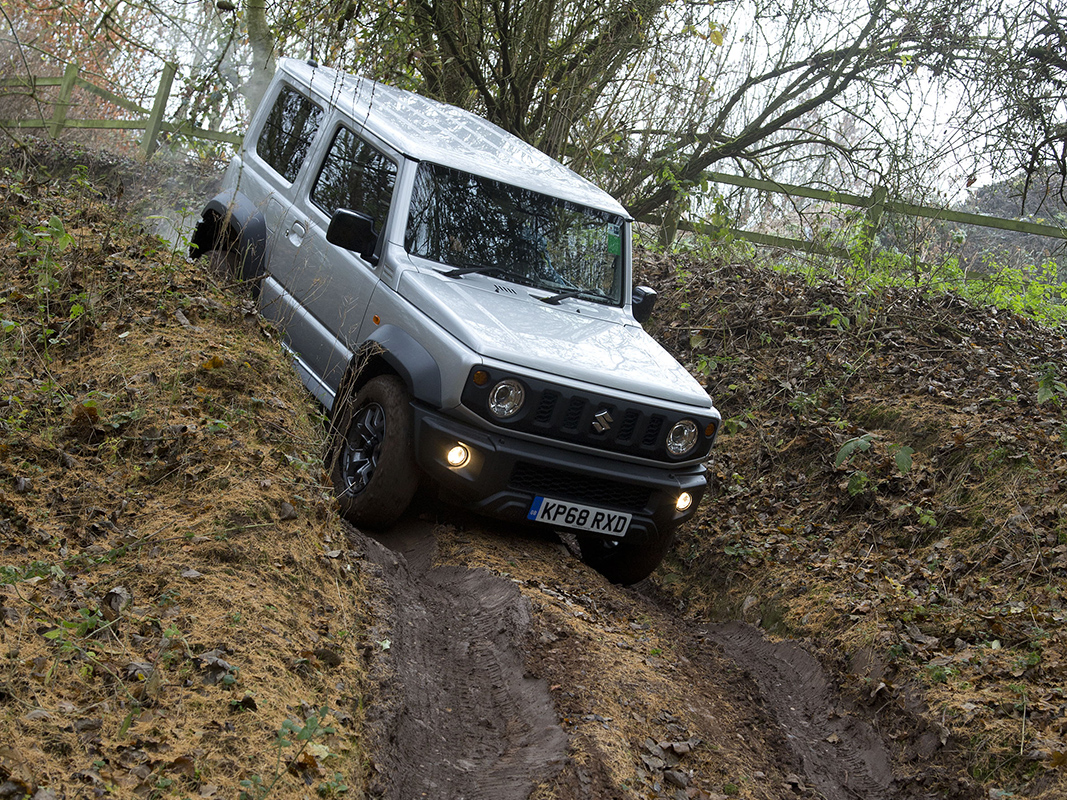
Objectively, though, the bias towards mighty off-road ability means this is not a refined or relaxing vehicle to use on tarmac, even if it apparently outclasses the car it replaces… but if you get into it expecting a truck-like drive, then you may quickly find yourself compelled to keep rooting for it throughout the journey as you sense that the slow little Suzuki is doing its best.
How many miles and months it takes for that plucky novelty to wear off for the urbanites mostly interested in the looks, however, remains to be measured…
Summary
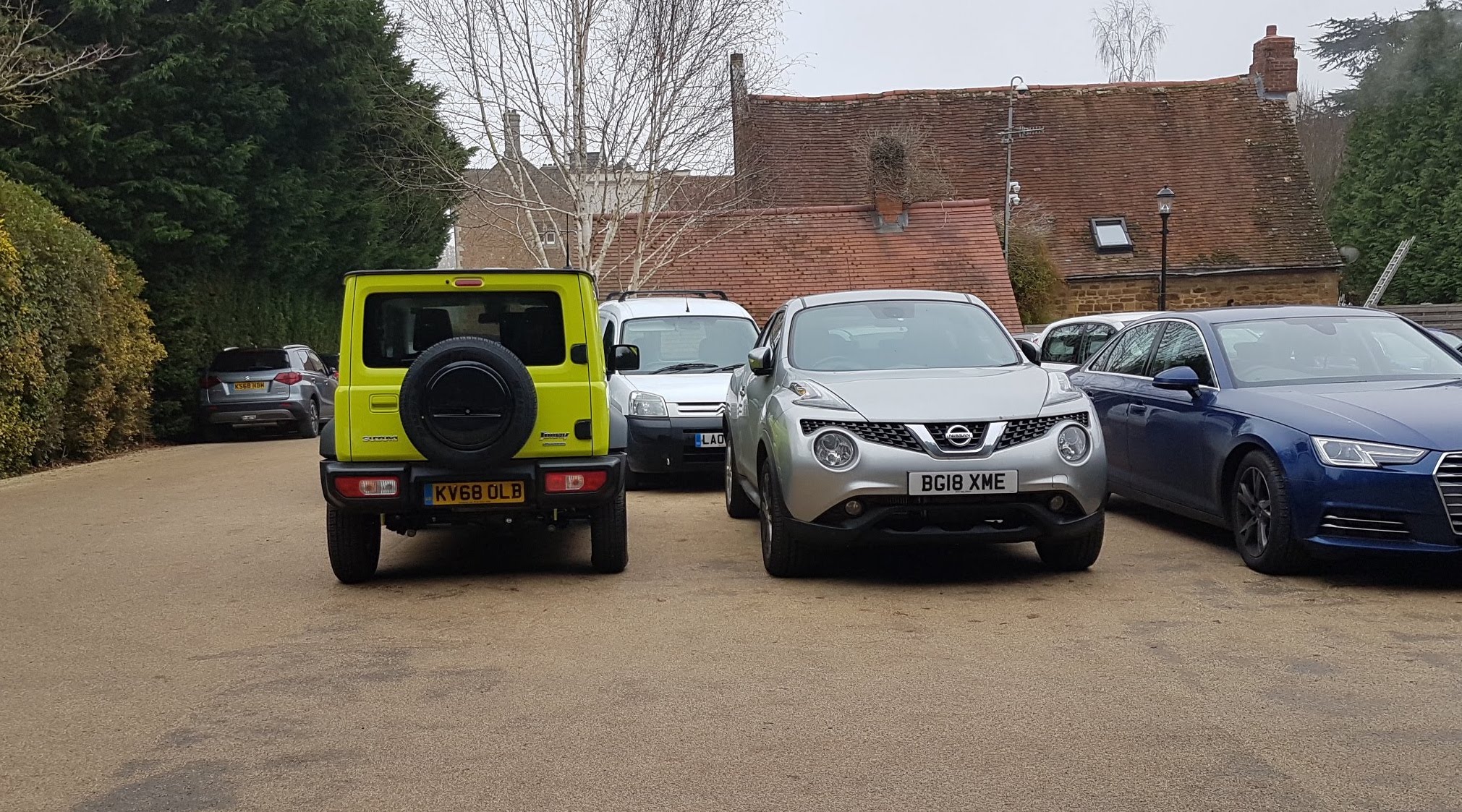
Generally speaking, everything the Jimny looks like it’s good at, it is indeed good at, while everything it doesn’t look so good at, it isn’t. The people who organise the World Car of the Year awards have entered the Jimny in the ‘Urban Car’ category and in some ways that feels like a mistake, in the sense that it isn’t engineered as a competitive city car at all, even though it’s the right size. This “tool for professionals” is meant to work in quarries, farms, construction sites and jungles, not cities.
However, if you know what you’re in for and take its honest looks at face value, then you could find a lot to like about such a purposeful, no-nonsense, go-anywhere adventure box… and the top-spec one only costs £18,000.
Technical Specifications
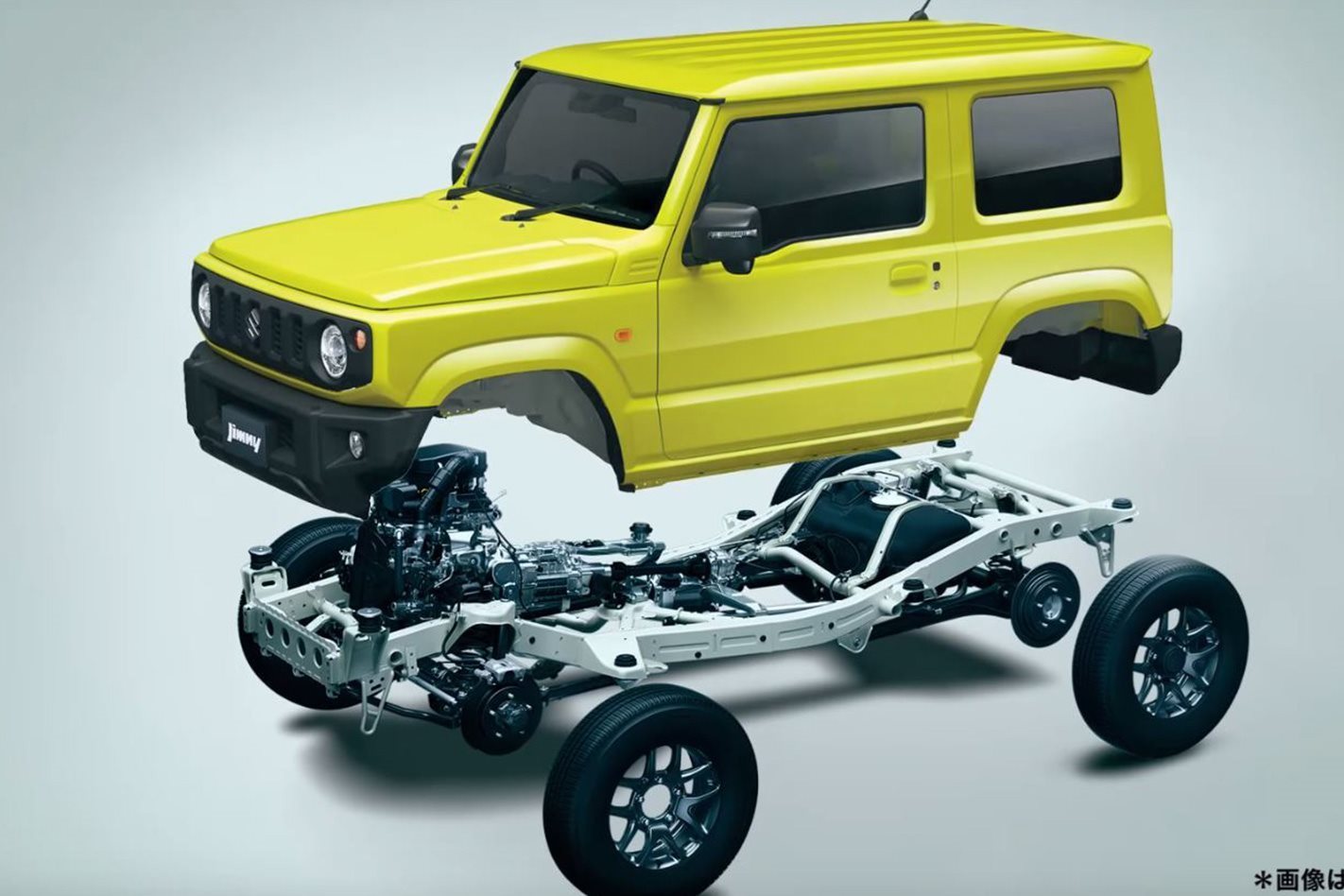
Chassis
Ladder frame, 3-link rigid axles, separate body
Dimensions & Weight
Length x Width x Height (mm):
3480 x 1645 x 1725
Wheelbase: 2250mm
Kerbweight: 1135kg
Ground clearance: 210mm
Max towing weight: 1300kg (braked)
Fuel tank: 40L
Off-road angles:
Approach: 37°
Break-over: 28°
Departure: 49°
Engine & Transmission
‘K15B’ 1462cc inline-4, naturally aspirated, petrol
100bhp @6000rpm, 96lb/ft @4000rpm
154g/km CO2, 41.5mpg (claimed)
5-speed manual or 4-speed automatic transmission
Selectable 4-wheel-drive with low-range transfer box
Wheels & Tyres
15-inch steel (SZ4) or alloy (SZ5) wheels
Tyres: 195/80/R15































